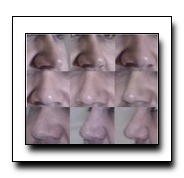
We describe a method for learning steerable deformable part models. Our models exploit the fact that part templates can be written as linear filter banks. We demonstrate that one can enforce steerability and separability during learning by applying rank constraints. These constraints are enforced with a coordinate descent learning algorithm, where each step can be solved with an off-the-shelf structured SVM solver. The resulting models are orders of magnitude smaller than their counterparts, greatly simplifying learning and reducing run-time computation. Limiting the degrees of freedom also reduces overfitting, which is useful for learning large part vocabularies from limited training data. We learn steerable variants of several state-of-the-art models for object detection, human pose estimation, and facial landmark estimation. Our steerable models are smaller, faster, and often improve performance.
Download: pdf
Text Reference
Hamed Pirsiavash and Deva Ramanan.
Steerable part models.
In
Computer Vision and Pattern Recognition (CVPR), 2012 IEEE Conference on. IEEE, 2012.
BibTeX Reference
@inproceedings{PirsiavashR_CVPR_2012_2,
author = "Pirsiavash, Hamed and Ramanan, Deva",
title = "Steerable Part Models",
booktitle = "Computer Vision and Pattern Recognition (CVPR), 2012 IEEE Conference on",
year = "2012",
organization = "IEEE"
}
